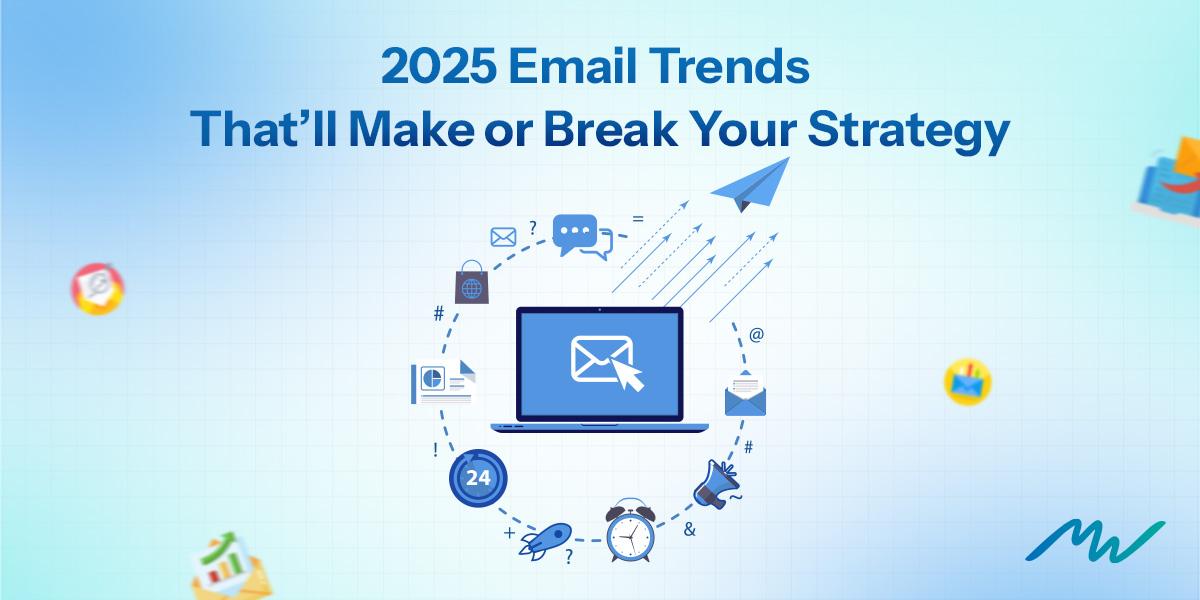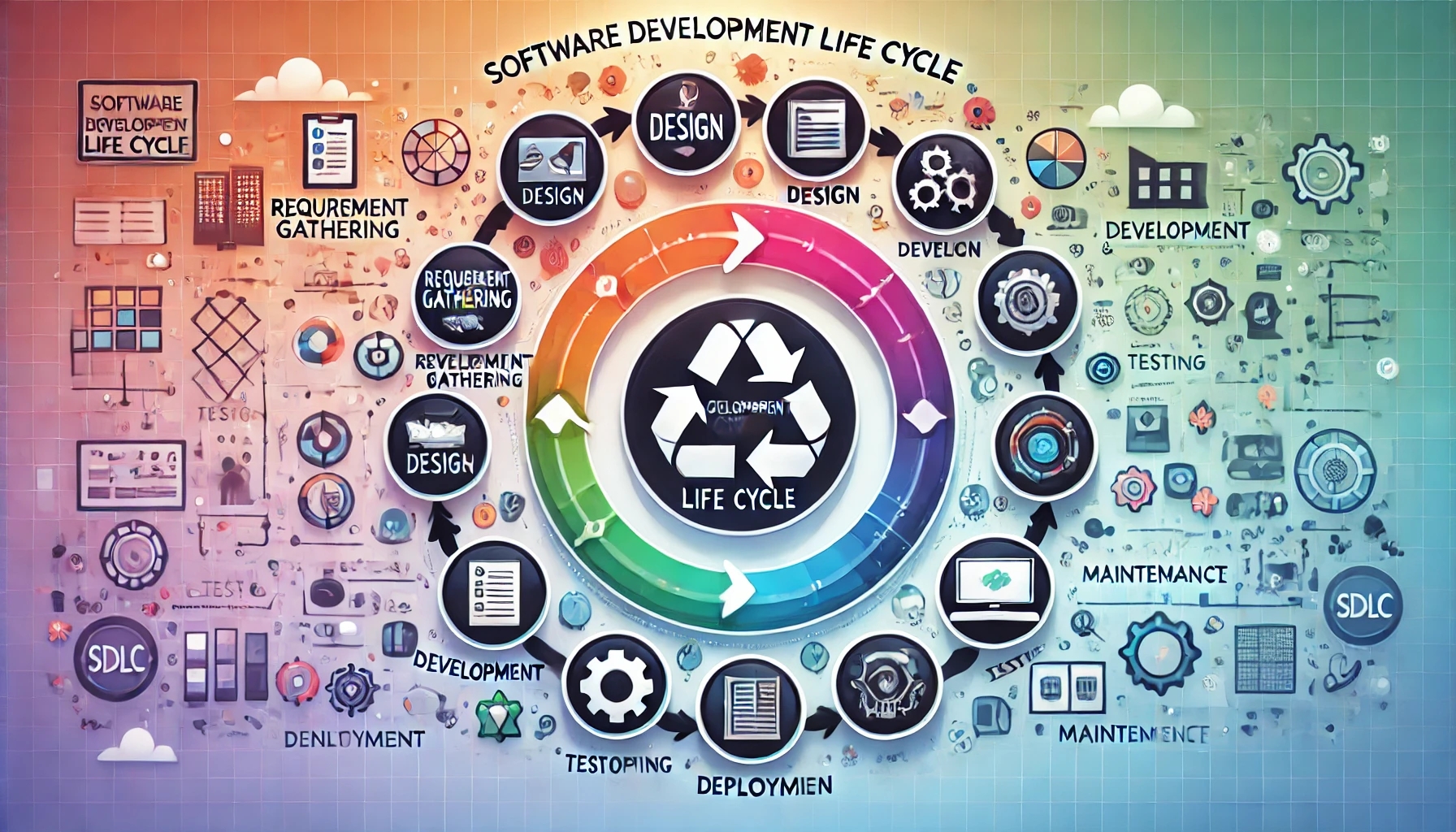The Future of Email Marketing: Trends for 2025 and Beyond
-
AI, privacy, and mobile-first strategies are redefining the inbox in 2025.
-
Smarter segmentation, interactive content, and trust-building fuel higher ROI.
-
Future-proof your program with tools, a 60-day plan, and sustainable practices.
Last Update: 15 Sept 2025

When email turned 50, many called it “old-school.”
Yet the numbers prove otherwise: every $1 invested still returns around $42, even lean teams average $36 back.
.png)
That kind of ROI survives only because smart marketers evolve with the inbox instead of fighting it.
And right now, the inbox is shifting again.
- AI drafts copy in seconds
- privacy rules tighten every cycle
- newsletters are the new favorite long-form hangout
If you’re still blasting the same templates from two years ago, you’re not just outdated, you’re leaking revenue and losing trust.
By the end, you’ll have a playbook for adapting before Q3 hits.
Why Email Marketing Still Wins in 2025
Unlike social or search, email is the one stage you own, no algorithm can throttle reach. That matters when ads cost more and feeds shift daily.
Shoppers notice the difference: 77 % of U.S. consumers prefer promo updates by email over social or SMS.
But inbox providers are stricter than ever. Relevant, permission-based email glides into the inbox. Noise goes straight to spam.
The rule for 2025 is simple: earn attention, or lose placement.
Mini-summary: Email is still the ROI leader because you own the channel. But attention is harder to earn, relevance is survival.
The Growth of Email Marketing (Stats to Watch)
If that 77% stat caught your eye, the raw numbers seal the deal. Here’s the scoreboard for 2024 → 2025:
| Indicator | 2024 | 2025 Outlook |
| Global users | 4.48B | 4.7B+ |
| Mobile-open share | 50–60% | Trending toward 70% |
| Revenue from relevant automation | 18× higher than generic blasts | Rising further |
Mini-victories worth copying:
- Warby Parker used AI to time/tailor product drops → +18% YoY email revenue.
- Brooklyn Brewery purged inactive + added double opt-in → +27% opens and saved $1.2k/yr on ESP costs (internal audit).
Mini-summary: Email’s audience keeps growing, mobile is the default, and smarter automation multiplies revenue. The best brands already prove it.
But numbers only tell part of the story, the real shift comes from how technology and behavior are reshaping the inbox. Let’s break down the 7+ trends driving 2025.
7+ Email Marketing Trends That Will Define 2025
The scoreboard shows what’s happening. These trends explain why—and how to prepare.
.png)
1. AI-Powered Personalization
Real-time blocks now swap products, prices, even tone per reader.
- Personalized subject lines alone can lift opens 50% (Marketing Dive).
- Retailers like Nike are already testing AI-driven layouts that adjust imagery based on gender, past purchases, and even weather in the subscriber’s location.
Think of it this way: a reader in Miami gets summer sneakers, while someone in Oslo sees winter boots, from the same campaign. That’s the future of personalization.
Mobile-First or Fail
- Keep width <600px, fonts ≥16px, buttons thumb-sized.
- With 70%+ of opens on mobile, your desktop version is a fallback at best.
Example: A travel brand cut its desktop-heavy newsletter into mobile-sized cards with thumb-friendly CTAs.
Result? 22% more clicks from iPhone users and lower unsubscribes because the content “just fit.”
In 2025, “mobile-first” is no longer a design tweak — it’s a revenue strategy.
3. List Hygiene = Growth
- Quarterly scrubs + double opt-in protect deliverability.
- Segmented sends deliver 320% more revenue than batch blasts (Campaign Monitor).
4. Privacy-First Metrics
- Opens are unreliable (thanks, Apple MPP).
- Clicks, conversions, and revenue per send are the new north stars.
5. AI Content Drafting (Human Polish Required)
- Let AI outline, then layer brand voice + compliance.
- Fast production + authentic tone = the winning combo.
6. Hyper-Segmentation & Prediction
- Behavior > demographics.
- Segmentation drives 30% more opens and 50% more clicks (HubSpot).
7. Interactive Emails
- Polls, quizzes, product carousels = higher dwell time + 1st-party data.
- Outlook still lags → always include fallback links.
8. Dark-Mode Readiness
- 4 in 5 readers browse in dark mode (Litmus).
- Test contrast + use transparent PNGs to keep logos visible.
Side note on trust: BIMI logos beside “From” names boosted opens up to 10% in early Verizon tests (Oracle).
Mini-summary: Tech + behavior shifts demand agility. AI, privacy, and mobile-first design aren’t optional, they’re survival.
Spotting trends is step one. But how do you actually act on them without bloating your stack? That’s where the right tools make all the difference.
Top Tools to Future-Proof Your Program
Trends mean nothing without execution. These tools cover the gaps:
| Platform | Best For | Why It Helps | Base Price |
| ActiveCampaign | AI automations | Predictive send time, scoring | $49/mo |
| Klaviyo | E-commerce | Shopify sync, SMS + email | Free ≤500 subs |
| HubSpot Starter | B2B + CRM | Sales + marketing in one hub | $20/mo |
| MailerLite | Lean budgets | Drag-drop, A/B, automations | Free ≤1k subs |
| Litmus | QA + dark mode | Previews in 100+ clients | sub-based |
| GlockApps + MXToolbox | Deliverability | Placement & blacklist alerts | $99/mo |
| Mailchimp | Starter all-in-one | Templates, automation, analytics | Free ≤500 subs |
Pro Tip: Don’t overload your stack. Fix one bottleneck first, let results guide the next upgrade.
A 60-Day Inbox Health Plan
Great tools enable change, but a clear plan drives results. Here’s how to tune up your inbox in two months:
.png)
| Step | Why It Matters | Potential Gain |
| Day 1: MXToolbox scan | Check SPF/DKIM/DMARC & blacklist status | Prevents silent spam issues |
| Days 1–7: re-engage 90-day inactive | Trim dead weight, revive warm leads | Save $1.2k/yr (Brooklyn Brewery) |
| Day 14: mobile + dark mode audit | Match 60%+ mobile readers | +15–20% clicks (Mailchimp study) |
| Day 30: enable double opt-in | Cut complaints, boost trust score | +5–10% inbox rate |
| Day 60: hit KPI targets | ≥95% inbox, <1% bounces | Protects sender rep for Q3 promos |
Mini-summary: With 5 simple steps, you’ll lift inbox placement, cut costs, and protect your reputation before next quarter.
Sustainability & Trust: The Quiet Differentiators
Once the basics are locked (deliverability + engagement), the true differentiator is how you show up in the inbox.
Consumers expect more: 88% say brands should help them live sustainably.
- Fewer, more relevant sends → lower spam + smaller carbon footprint.
- Transparent preference centers + zero-party data → trust most competitors can’t copy overnight.
Case in point:
Patagonia now highlights its sustainability commitments directly inside subscriber journeys, not just on its website.
Instead of endless promos, it mixes stories about recycled materials with product drops.
The result: higher engagement from eco-conscious subscribers and a reputation boost no algorithm could buy.
You don’t need Patagonia’s budget to copy this. Start small:
- Add “green” footer notes (energy-efficient hosting, fewer sends).
- Give subscribers control through preference centers.
- Replace data hoarding with voluntary zero-party data collection.
Mini-summary: Relevance builds ROI. Transparency builds trust. Together, they create a brand advantage no competitor can fake.
Conclusion
The future of email isn’t about hacks or chasing every shiny tool. It’s about understanding shifts and building a program that grows with them.
2025 brings sharper tech, smarter subscribers, and higher expectations. The winners will be those who:
- Respect the inbox
- Lean into personalization
- Treat trust like currency
You don’t need a total overhaul today. But if you’re running yesterday’s playbook, now’s the time to evolve:
- Clean your list
- Test your tools
- Segment with purpose
And always send like someone’s paying attention because they are.
Ready to future-proof your email marketing? Start with a simple inbox health check today.
Trendingblogs
Get the best of our content straight to your inbox!
By submitting, you agree to our privacy policy.








